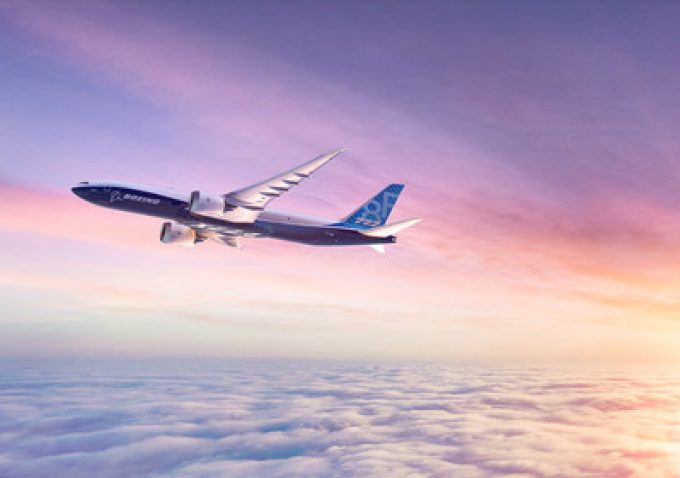'Last chance' for US importers to stock up before possible east coast port strike
The lead time for Chinese exports to the US east coast is still just over ...
TFII: SOLID AS USUALMAERSK: WEAKENINGF: FALLING OFF A CLIFFAAPL: 'BOTTLENECK IN MAINLAND CHINA'AAPL: CHINA TRENDSDHL: GROWTH CAPEXR: ANOTHER SOLID DELIVERYMFT: HERE COMES THE FALLDSV: LOOK AT SCHENKER PERFORMANCEUPS: A WAVE OF DOWNGRADES DSV: BARGAIN BINKNX: EARNINGS OUTODFL: RISING AND FALLING AND THEN RISING
TFII: SOLID AS USUALMAERSK: WEAKENINGF: FALLING OFF A CLIFFAAPL: 'BOTTLENECK IN MAINLAND CHINA'AAPL: CHINA TRENDSDHL: GROWTH CAPEXR: ANOTHER SOLID DELIVERYMFT: HERE COMES THE FALLDSV: LOOK AT SCHENKER PERFORMANCEUPS: A WAVE OF DOWNGRADES DSV: BARGAIN BINKNX: EARNINGS OUTODFL: RISING AND FALLING AND THEN RISING

Flexport is optimistic about Eastern Airlines’ gamble on semi-converting 777 passenger aircraft into freighters – but admitted it would need to be evaluated once flying has begun.
Eastern decided last year to ‘convert’ the aircraft, simply by removing seats, galleys and toilets, a far simpler and quicker process than the traditional conversion process of enlarging the doors and reinforcing the floor. Flexport has signed a “medium-term” deal for the first two aircraft, which should deliver in May or June, with options on more.
“The idea is innovative,” said Neel Jones Shah, head of airfreight for Flexport. “They are very young aircraft and have been very well maintained. It’s a quick conversion process, and innovative.
“It’s been proven that passenger freighters have worked. While we are not going to see those heights [of demand] again this year, the market can still support this. These aircraft will fill a void in the market, and help us to create direct connections from South-east Asia.
“There is only a 75-tonne payload, but that’s fine if the cargo is volumetric, which it is, particularly with e-commerce. These airplanes will fill an important niche for us.”
The proof will be in the eating, however.
“We will have to see if they perform as advertised. We will learn together with Eastern. We are an innovative company, and we love partners prepared to take a risk. We think there is something here, but we will have to evaluate the performance of the airplanes. If they perform according to expectations, why not have them as part of our fleet?”
One of the biggest challenges for passenger freighters is the loading and unloading, a process dnata told The Loadstar last week was “very labour-intensive”.
“Each box has to be handled three times after it arrives in the back of a truck,” said dnata MD Alex Doisneau. “The turnaround is also longer because this loading process can add several hours.”
Mr Jones Shah, talking on the sidelines of the TIACA executive summit in San Francisco this week, agreed that the process was more complex – but, in fact, it added an opportunity.
“There’s no doubt it will take a long time to load and unload. But it’s easier than a passenger freighter, and we are working with handlers on this. But we are also looking at innovative ways to improve the scheduling. We will fly Chicago-Incheon-Ho Chi Minh-Incheon-Chicago, with a 14-hour stop in Ho Chi Minh, which will give the crew a long break before flying back. It’s a very efficient use of resources which will allow us to operate some tight schedules.”
He added that Flexport was reviewing its handling options in Chicago.
“Handlers have had a tough time, and we need to pick the right one, one with a high degree of efficiency in this operation, some have done really well.”
He implied that Flexport would likely pick a smaller handler, explaining: “We prefer being a big fish in a small pond, as you get better taken care of. We want our business to be part of their overall viability.”
Eastern Airlines said it was in talks with more customers over its potential fleet of 33 aircraft.
“We have significant demand for the subsequent aircraft, and hope to sign second and third multiple aircraft launch-customer contracts shortly,” said Mike Duggan, head of cargo. “The first aircraft are undergoing conversion in parallel with certification and the airline is excited to start operating as soon as we have certifications.
“Once certified, we hope to be able to bring this new capacity to the market quickly, highlighting the shorter conversion time of this design. We are introducing aircraft one after the other, with the fleet of up to 33 conversion candidates ready to move to Kansas City for conversion.
“The market dynamics are clear, with continued capacity shortages exacerbated by Russian restrictions, so we are keen to get our solution on the market as soon as we can.”
Comment on this article